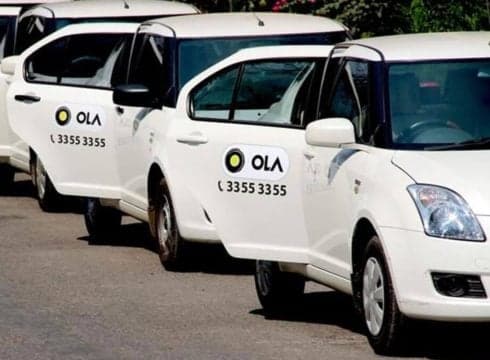• Ola Chief Bhavish Aggarwal wrote to employees that the company has reached ENTR positive
• Ola aims to be profitable by year-end
Inc42 Daily Brief
Stay Ahead With Daily News & Analysis on India’s Tech & Startup Economy
As Indian cab aggregator Ola expands its presence across geographies, the company has started making profits on its every ride after taking into account expenses such as driver incentives and customer discounts in the home ground. With this positive inclination, the company expects to be profitable in 2018.
In an email to employees, Ola CEO Bhavish Aggarwal wrote: “Last week, our India business crossed a major milestone. We are now ENTR positive.”
ENTR, described as “effective net take rate” is an important metric for ride-hailing companies. Take rate is the commission charged by companies from their drivers and ENTR is the take rate after removing costs such as discounts per ride.
“This milestone has come after a consistent and persistent effort that all of you contributed in, and we’ve been able to achieve it keeping market share and growth steady,” Aggarwal added.
He also emphasised that the company has not sacrificed top-line growth or ceded market share to Uber to achieve this goal.
Aggarwal wrote in the email that Ola is aiming to become profitable this year. “We will continue to focus on profitable and sustainable growth, and building a growing profitable business, the first in Indian internet,” he added.
In an email query, Ola declined to comment on the same.
Operating as it does in one of the biggest cash-burning service industries, it hasn’t been an easy ride for Ola, but with every profitable ride, the company is slowly inching towards profitability in the business.
In FY17, Ola’s operating loss increased 32% to $543.5 Mn (INR 3,731 Cr) while its operating revenue more than doubled to $171.6 Mn (INR 1,178 Cr).
The company’s filings revealed that it controlled variable costs such as advertising and promotion expenses to $41.51 Mn (INR 285 Cr) while fixed costs such as salary expenses increased to $83.34 Mn (INR 572 Cr).
However, at the same time, Ola’s undefined “other expenses” reached $590.38 Mn (INR 4052 Cr).
The company has projected curtail its net operating loss to $179.94 Mn (INR 1,235 Cr) for the year ending March 2019 and reach a profit of $108.67 Mn (INR 746 Cr) for the year ending March 2020, according to its latest valuation report filed with MCA for the acquisition of public transport ticketing application Ridlr.
Till March 2018, Ola had raised funding of $3.9 Bn in 11 rounds from about 20 investors. It is currently present in 110 cities with over 1 Mn driver partners. It has 14 service categories and ferries 2 Mn people every day.
The company was reportedly in talks with Singapore’s sovereign wealth fund Temasek and other investors to raise another $500 Mn to $1 Bn in funding.
Driver incentives in the competitive cab-hailing industry have dropped to less than 20% of the gross booking value at present from about 60% at the end of 2016, according to Redseer.
Ola, which is owned by ANI Technologies Pvt Ltd, is setting up a group holding company that will own Ola Cabs, Foodpanda, and its other businesses that are still in the nascent stage, such as its electric cabs and international operations.
At a time when Ola has been flaunting its growth objectives, the push of profitability could be a step in line with its plans to go public.
[The development was reported by ET.]
{{#name}}{{name}}{{/name}}{{^name}}-{{/name}}
{{#description}}{{description}}...{{/description}}{{^description}}-{{/description}}
Note: We at Inc42 take our ethics very seriously. More information about it can be found here.


